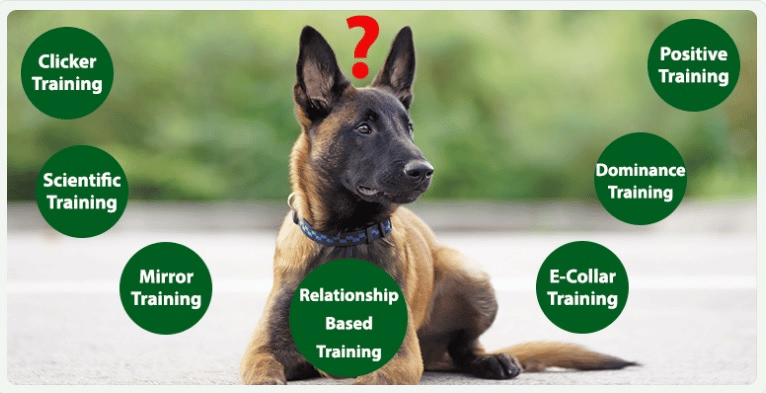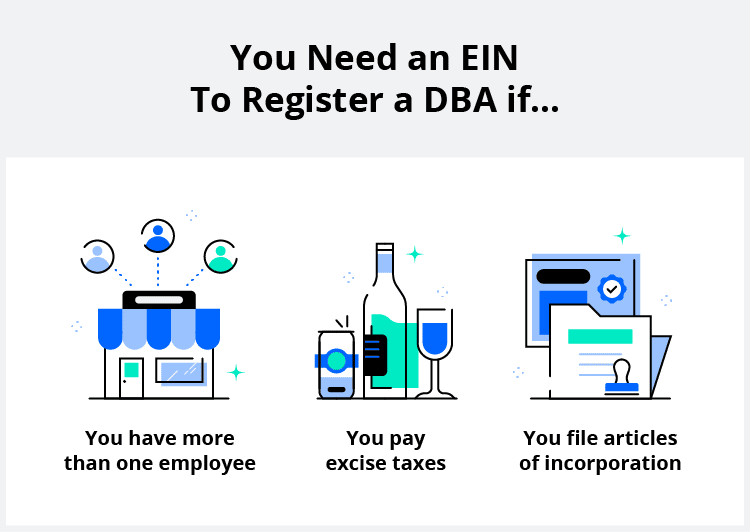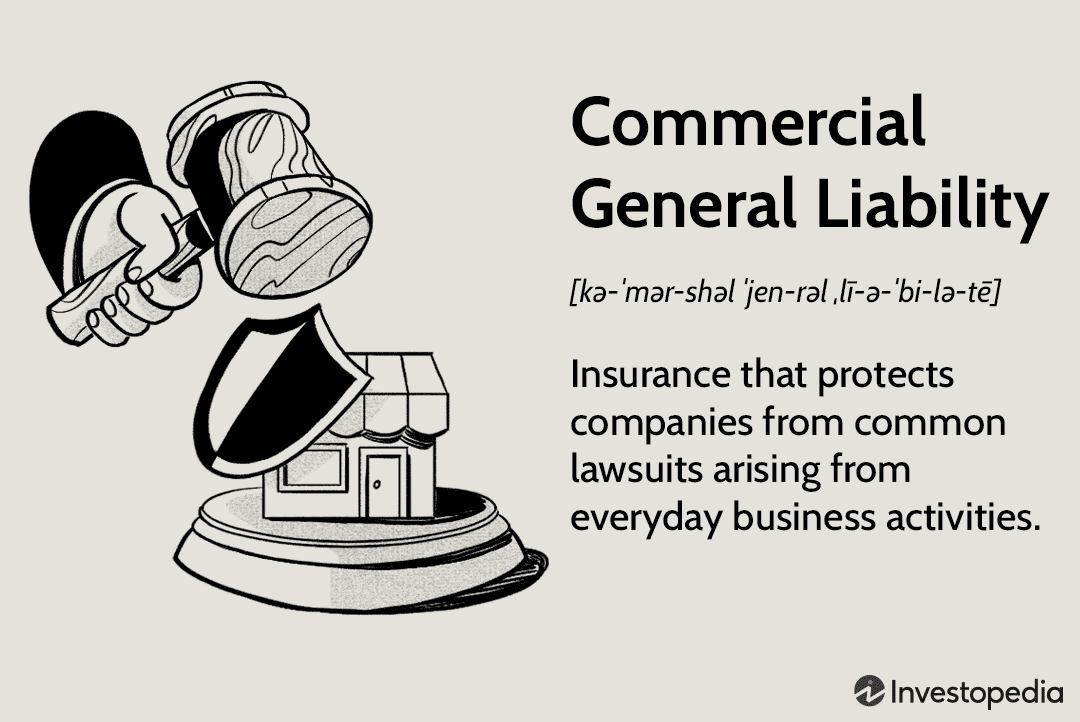The COVID -19 pandemic was a driving factor in pet ownership in the United States. The ASPCA says 23 million Americans brought a new pet home in 2019, 90% of these being dogs. With so many new pups in family homes, pet training is becoming a booming industry.

According to Pet Educate, the U.S. dog training business market has a financial trajectory of $820 million by 2026. Globally, dog training has a current compound annual growth rate (CAGR) of 9.6%. Not a bad time to join the dog training industry with your own dog training business, if you have a solid business plan.
The three main areas of training new pet owners look for from a professional dog trainer are:
- Behavior
- Obedience
- Special job (Seeing eye dog, search and rescue dog, police dog, etc.)
You can offer these as individual or group classes. Here, we’ll take a deeper look into how to start a dog training business, including required licenses, marketing tools, and even branding.
1. Conduct Dog Training Business Market Research
Creating a seamless dog training business plan means investing in dog training business market research. There are two types of market research.
- Primary: First-person research including personal experiences. Visiting local businesses, chatting with local pet owners, and polling customers all fall under primary research.
- Secondary: Second-hand information through readily available sources is secondary research. This includes government reports, online reviews, and dog training industry statistics.

Some of the things to tally as you dig into how to start a dog training business research include:
- Current leaders in the local dog training business market
- The population of dog owners in town
- Popular dog training business services
- Consumer demographics (age, income, household, etc.)
These details give you a jumping-off point for your own business model.
Choosing the Right Dog Training Services for Your Business
Knowing your market helps you decide which services to offer through your dog training business. There are many ways to train dogs, including:
- Positive reinforcement: Rewards are offered for good behavior. Bad behavior is ignored.
- Clickers: A clicker is used to deliver noise to condition the dog. A reward is offered to reinforce the clicker. Eventually, the dog recognizes the clicker without the pet treat.
- E-collar training: Uses electric collars which deliver a shock for bad behavior. This can be stressful for dogs, and some pet owners may steer away from it.
- Mirror training: As the name suggests, mirror training shows dogs what to do or not to do by way of a model. Another dog receives rewards or punishment, showing the dog in training how to proceed.

Gather service opinions by polling local pet owners, and visiting competitor websites. Don’t just look at what competitors offer, but what’s missing in the dog training industry that your brand can deliver.
2. Analyze the Competition
Dog training business competition is mainly local. As you analyze your competition to start a dog training business, look into tangible and digital resources, including:
- Websites
- Training services
- Customer Outreach
- Social media
- Reviews
- Training locations (inside, outside, in customer homes, etc.)
- Additional services or product sales (treats, shampoos, food sales, etc.)
The best way to find local shops is to perform a Google search for dog training in your city. You can also check out franchises, and national brands for ideas on successful dog training business plans.
Here are some of the top U.S. companies in dog training:
Bark Busters
This in-home training franchise currently offers opportunities in 15 different states. The home office is in Danville, California, and the company has been serving dog owners since 1989. The initial franchise fee is $37,500, with an overall investment of $71,000 to $94,000.
The Dog Wizard
Another popular franchise, The Dog Wizard has 40 locations across the U.S. They quote a total investment for a franchise as $73,350 to $101,500. Dog Wizard offers packages for mobile training, retail facility training, and add-on training for doggy daycare. The initial franchise fee is $38,000.
Hot Dog on a Leash
Big and small dogs benefit from Hot Dog on a Leash training. Hot Dog on a Leash specializes in agility training, scent training, water exercise, boot camp, surfing classes, and more. It’s also one of the cheaper franchises to set up with a franchise fee of only $1,000 and an overall investment of $14,000 to $20,000.
3. Understand the Costs of Starting a Dog Training Business
There are starting and ongoing costs associated with beginning a dog training business. From the facility, you train in, to the legal side of things. Here’s what you need to know.
What Does It Cost to Start a Dog Training Business?
There’s more to dog training than dogs and trainers. A lot of money goes into the initial investment of a dog training business, including elements such as:
- Facility rental
- Dog poop cleaning
- Utility expenses
- License and permits
- Legal fees
- Insurance
- Point of sale (POS) system
- Website and web design
- Treats
- Training equipment (obstacle course, clickers, etc.)
- Marketing
- Employee training and income
- Commercial vehicle
- Pet waste removal
The costs to start a dog training business depend on whether you’re developing a new brand or opening a franchise. As you saw above, a franchise can run anywhere from $1,000 to $38,000 for franchise fees and $14,000 to $102,000 for total startup costs.
Beginning your own brand changes these costs, and the outcome is dependent on things like:
- Training in-home or on-site
- Size of office space and training facility
- Number of employees
- Required equipment based on desired training services
You can expect a new dog training business brand to run between $10,000 and $45,000. The spectrum’s lower side is for business training in customer homes and public dog parks.
Business Equipment/Materials
A big part step in learning how to start a dog training business is the equipment. The training equipment you use depends entirely on the space you have to use them in. Dog training businesses with their own facility should invest in large equipment to stimulate play and encourage tricks.
Small training businesses operating out of homes or public parks may only invest in mobile equipment like training hoops, treats, and collars.
Here are a few places to begin your search.
- Maximum K9 Service: Provides handler gear, reward toys, training collars, dog crates, field equipment, and more.
- Pet Pro Supply Co: Supply a variety of large equipment, including agility training sets, dog training platforms, pet treadmills, treat pouches, and wobble boards.
- Chewy: A bulk training treat company with various flavors and ingredients.
As you get started, here are some of the materials and supplies to consider purchasing:
- Bulk Training Treats ($80 to $103 for 15lbs): Training treats vary depending on the type of treat and ingredient. You’ll pay more for specialty treats for pups with dietary issues.
- Training Platform ($160): A durable, washable platform offering dogs a place to practice commands.
- Agility Tunnel ($72): Play tunnel with sandbags for sturdiness. The dog travels through a tunnel, learning to follow commands and trust the trainer.
- Clickers ($56 for a pack of 50): Clickers tell dogs when they’ve performed good behavior and to anticipate a reward.
- Treat Pouch ($5 to $20): Training dogs requires plenty of treats in the beginning. A pouch keeps treats easily obtainable during activities.
Save money by looking for used equipment on Craigslist, eBay, and Kijiji.
Cost of Renting or Leasing a Location
Leasing space for a dog training school is tough. Many commercial spaces prohibit pets to keep spaces clean and odorless. Some dog trainers choose to buy or build.
You’ll pay by square foot if you find a property owner open to a dog training business. For example, a commercial property at $24/sq ft per year on a building with 1000 square feet costs $24,000 per year. Divide this by 12 for monthly payments of $2,000.
You might find success renting:
- Leasing space from a local veterinary clinic
- Partnering with a doggy daycare/boarding business
- Finding training or grooming companies going out of business
Business Formation
All businesses, big and small, need to form a legal business by registering a name and obtaining proper licensure. Start with the Small Business Administration. Dog training businesses pay roughly $300 to $800 for name registration and permits.
Business Insurance
Dog training businesses require business insurance to protect yourself, your employees, and your brand. Some insurance products you might need include:
- General liability insurance
- Commercial property insurance
- Commercial vehicle insurance
Utilities
Utility costs vary by the size of your training facility. Some of the utilities you’ll pay for include:
- Heat
- Water
- Electricity
You may also choose to hook up a landline business phone and internet at your facility. This is especially true of any dog training business with on-site office space.
Utilities range in price from city to city, but you can expect to pay roughly $2.90 per square foot for electricity a year. Most dog training businesses will spend about 4% of total operational costs on these utility payments.
What Are the Ongoing Costs of a Dog Training Business?
After startup costs, damage deposits on your lease, and equipment, your dog training business will have ongoing fees to pay. These are the costs of everyday supplies and services, such as:
Administrative materials (printer paper, ink, etc.)
- Business cards
- Monthly rent
- Utilities
- Dog treats
- Dog food
- Marketing costs
- Insurance
- Staff wages
- Training costs
- Commercial vehicle fuel
- POS fees
- Bank and credit card fees
If you sell special training products like e-collars and no-pull leashes, you’ll likely pay to replenish inventory as well.
4. Form a Legal Business Entity
In the U.S., you must form a legal business entity to offer services for income. There are four main entities to consider. These are limited liability corporations (LLCs), sole proprietorships, partnerships, or corporations. Each has its pros and cons. Here are some details to help you decide.

Limited Liability Corporation (LLC)
An LLC is the most beneficial business entity choice for small businesses like a local dog trainers. It separates personal and business assets, protecting you from potential lawsuits or liability issues.
Sole Proprietorship
A sole proprietorship is a business entity owned by a single person (or married couple). You make all the business decisions for your business, with no input from a board or shareholders.
Unlike an LLC, a sole proprietorship doesn’t protect your assets. Instead, everything is tied up with your business. If you get sued because a dog bites an employee, your legal fees could come out of your personal savings.
Partnership
Like a sole proprietorship, a partnership ties personal and business property together. This is a good business model for family members looking to share business ownership and decision-making rights. Lenders may look to your personal assets for recompense if the company goes bankrupt.
Corporation
A corporation is a highly advanced and somewhat complicated business entity. It offers maximum protection and separates personal and professional assets. It’s also extremely costly and requires plenty of paperwork to get off the ground.
This is a good choice for large companies, but not for small businesses.
5. Register Your Business for Taxes
Every business needs an Employee ID Number (EIN) to legally operate. This is also called the federal tax ID because you need one to file business taxes.

As a dog training business, you can obtain your EIN through the U.S. Small Business Administration. The process is fairly straightforward and opens doors to a variety of business-specific practices, such as:
- Opening a business bank account
- Applying for a business credit card
- Paying employees
- Filing annual business taxes
- Making changes to payment and benefits for non-US resident employees
Every state has individual tax requirements set by the U.S. government. Check with your state to make sure your pricing plan meets state tax regulations.
6. Setup Accounting for Success
Any business with an income needs some type of accounting. Small businesses like dog trainers can do a lot on their own with business software. Some things still require a professional. Here are some accounting options to consider as you start your business.

Accounting Software
Quickbooks is one of the top accounting software on the market. It offers a variety of tools and information specifically designed for small business owners. From automating customer invoices to tracking spending, there are different packages based on your needs.
Accounting software handles a lot of the small everyday accounting tasks for your business. It minimizes the costs of a full-time accountant.
Find an Accountant
While Quickbooks does a lot, you’ll still want an experienced business accountant at tax time. Accountants are trained in all the red tape and legalese of tax season. For businesses looking for max deductions, working with a professional is worth the cost. A CPA charges between $150 and $400 an hour.
Get a Business Bank Account
The IRS provides a useful Small Business Tax Workshop. One of the steps they cover is setting up a business bank account to separate spending. Keeping your personal and professional finances apart is best from a legal standpoint. It also makes filing taxes easier.
Apply for a Business Credit Card
A business credit card is another option small business owners may want to invest in. Business accounts offer several incentives compared to private credit cards, including:
- Low interest
- Cash back rewards
- Travel rewards
You can also set up custom spending caps and track work-related charges.
7. Obtain Business Licenses and Permits
There are different license and permit requirements across the U.S. for small businesses. A dog training business doesn’t fall under any federal agencies, but you can double-check with the U.S. Small Business Administration for updates.
For state licenses, enter your state and zip code in the SBA’s Find Local Assistance tool. This will give you details on your state’s individual license and permit codes.
There’s no official certification for dog trainers. However, if you want to stand out you can apply to the Certification Council of Professional Dog Trainers to become a certified dog trainer. The CCPDT exam has a pre-requisite of 300 training hours (in the past 3 years), a recommendation from a veterinarian, and signed documents provided by CCPDT.
8. Get Business Insurance
Business insurance is essential for a dog training business. Working with pets is a liability in itself. There’s always something that could go wrong, and your insurance protects you against legal and financial hardship.

The most common insurance product for a dog training business is general liability insurance. This protects you from financial claims due to injury, or property damage caused by your services.
For a small business, general liability insurance costs somewhere between $300 to $1,500 for $1 million in coverage.
If you’re leasing a training facility, you’ll also want to invest in commercial property insurance. This product protects against damages to your business and assets caused by theft, vandalism, and some natural disasters. On average you can expect to pay $1,000 to $3,000 per year for $1 million in coverage.
9. Create an Office Space
Every dog training business needs an office for administrative work. You can’t train and pay invoices in the same space (you could, but it might get messy). Offices come in all shapes and sizes. You need to choose the space that works best for your small business.
Home Office
Creating a home office is easy and affordable. It also offers some great tax incentives, including rebates on the internet, travel, utilities, and even some renovations. You can learn more about specific home office incentives through the IRS.
The IRS caps home office deductions at $1,500 each year. You can calculate this based on square footage or individual expenses.
CoWorking Office
Coworking offices give the feel of a corporate office without the high cost. Use your space when you need it, with no long-term commitment, down payment, or lease.
WeWork is an excellent example of a coworking office. They provide a variety of plans based on your preferred level of privacy and your budget. Membership options are flexible with short-term contracts.
Commercial Building Office
A commercial office is an attractive administrative option, but pricey. For small businesses, this isn’t always a feasible choice. Cost varies by building and lease, but the price is $24 per square foot on average.
10. Source Your Equipment
Finding the right tools for your dog training business sets you apart from local competitors. There are so many toys, treats, and equipment to choose from. Here are some options for finding the best supplies.
Buy New
Buying new equipment offers the advantage of clean training tools with no scents of other dogs or people. For technical equipment like e-collars, you also receive warranties for mechanical issues.
Maximum K9 Service and Pet Pro Supply Co are good spots to shop for new commercial dog training equipment.
Buy Used
Some products in dog training are fine to buy used. Large obstacle courses and agility training equipment, for example, are much cheaper when used.
Craigslist and Facebook marketplace are two spots to start your search for used gear. You can also check with local vets and doggy daycares to see if they have any connections selling training equipment.
11. Establish Your Brand

Your brand is critical to the success of your business. It encompasses a variety of things, including the reputation and identity of your dog training company. Building your brand helps you connect with customers, and differentiates you from other dog trainers in town.
There are plenty of ways to begin developing your brand. Creating an entity separate from your personal life, and engaging with customers is the best way to get started. Here are some tips for getting your brand off the ground.
Get a Business Phone Number
Keeping your business and personal life separate is important for many reasons. Business lines are recommended to stay organized, appear professional, and ensure you don’t miss any business calls.
Try Google Voice to add a business line for as low as $10 per month. There are also traditional business lines available through big brands like T-Mobile and AT&T.
Create a Logo & Brand Assets
What’s a business without a logo? Still a business, but harder to differentiate from other dog training companies in town. A logo tells your customers who you are. It helps them identify you at events, and even find your business signage on a busy street.
An affordable logo resource for small businesses is Looka. Using artificial intelligence, Looka supplies logo design options based on your preferences for other logo designs. Change the size, color, font, and more based on your tastes.
Create Business Cards and Signage
Signs make your training facility look like a business inside and out. Professional signage is important to your business’ image. It should include your brand logo and business name as a baseline.
Business cards are another important facet of branding your business. These are like tangible paper Facebook shares. Customers can give them to friends and coworkers, you can hand them out at local events, and they’re great marketing resources at networking activities.
Vistaprint is a leader in business card design and distribution. Get 100 matte business cards for your dog training business for just $18. Vistaprint offers a variety of design and logo options for your cards.
Purchase a Domain Name
Domain names give your online identity credibility. A real .com address has a ring of authority to it. You can get a domain name through a variety of online providers, including Namecheap.com.
Choose a package for your domain based on usage, name availability, and other preferences. Namecheap offers addresses at just $5.98 per year and up.
Build a Website
Your website tells local dog owners who you are and why you’re qualified to train their pets. This is the first place many customers will look to learn about your services, prices, and qualifications.
There are plenty of ways to build a credible and affordable website. Do it yourself with website builders like Wix, or use a crowdsourcing site like Fiverr to find an affordable freelancer.
12. Join Associations and Groups
Joining dog training and dog business associations is a big support for a new business owner. You can talk to others in your industry, and learn to navigate tricky situations with help from professionals.
There are plenty of places to look for these groups, starting with the International Association of Canine Professionals. Here are some other places to look.
Local Associations
Look for local associations and groups in your area supporting dog training, doggy daycares, and other dog businesses. Join the Association of Professional Dog Trainers to look for other trainers in your area.
Local Meetups
Local networking events and trade shows are good places to market yourself and access new partnerships. The American Kennel Club has a search feature for finding local dog training events.
Meetup is another great digital resource to find local events and meetings in and around your area. You can create a group, or find an existing dog training group in your city or state.
Facebook Groups
Social media support groups are great for connecting with local businesses and global industry leaders. Learn modern and humane dog training techniques, share tricks of the trade with other trainers, and gain insight into new training tools.
Some Facebook dog training groups to get you started are:
- Dog Trainer Sales and Marketing Group
- Dog Training Advice and Support
- Dog Business Owners Advice Support Group
There are plenty of other dog and pet training business groups to explore.
13. Focus on Marketing
Marketing is crucial for small local businesses, especially niche industries like dog training. People love their pets. Your marketing efforts need to prove to your community they can trust you with their furry friends. Some ways to get your brand out there include:
Your loved ones are a great untapped marketing resource. They already support you personally, why not professionally? Some ways to get your friends and coworkers involved is to ask them to:
- Share your business page on social media
- Spread the word about upcoming doggy social events
- Hand out business cards and coupons for training classes
- Try your business and leave a genuine review
Word-of-mouth marketing is super relevant in today’s consumer-driven business landscape. The more people talking about your dog training business, the better.
Digital Marketing Ideas
It’s a digital marketplace, even for businesses operating in the real world. Modern consumers are looking up local brands on social media and Google reviews long before visiting in person. Here are some ways to make your brand relevant online:
- Write a blog
- Engage with customers on social media
- Create dog training videos on YouTube or TikTok
- Send a weekly newsletter on upcoming events and discounts
- Use Facebook and Google ads to target local pet owners online
Digital marketing has free and paid advertising options. The more you share and engage, the more brand knowledge you build online.
Traditional Marketing Ideas
Traditional marketing isn’t over. There’s a lot to be said about tangible advertising. Holding something in your hand like a business card or a brochure makes an impression. You also don’t have to worry about it getting stuck in “the filter”.
Your dog training business might benefit from traditional marketing mediums like:
- Newspaper ads
- Local billboards
- Park bench and bus ads
- Course catalogs
- Bulletin board flyers
- Coupons for treats and classes
14. Focus on the Customer
Dog training business owners prosper by really getting to know their customers. Both human and four-legged customers are important to the longevity of your brand.

Your initial market research tells you all about your customer demographic. It can also help you discover things dog owners want to see from the businesses they frequent. Connecting and engaging with local consumers is a great way to humanize your own dog training business and build brand loyalty.
Try giving back to customers with:
- Loyalty programs
- Doggy socializing events
- Referral rewards
- Exclusive offers via email and direct mailouts
- Customized training classes tailored to unique breeds and behaviors
We hope this guide has offered some useful advice on how to start a dog training business. Good luck and keep those tails wagging!
